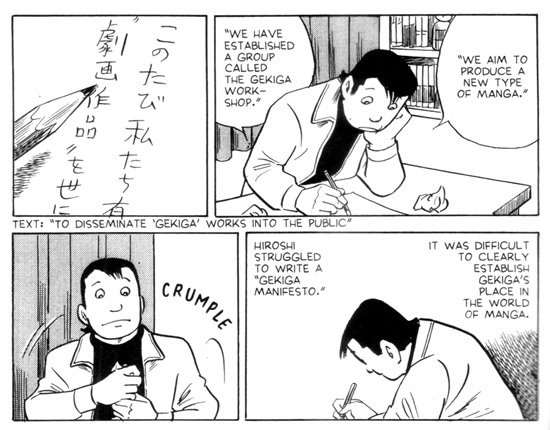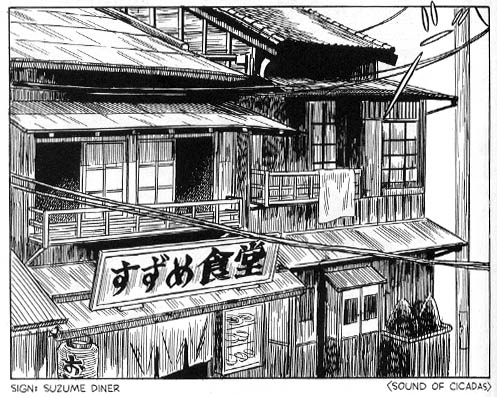There’s an old story about a medieval traveler who comes upon a building site where three stonemasons are working. He asks the first, “What are you doing?”, to which the mason replies “I am laying bricks.” He poses the same question to the second, who replies “I am building a wall.” But when he asks the third mason this question, the man smiles broadly and replies “I am building a cathedral.”
This story came to my mind while reading A Drifting Life because the book functions on three levels. Fundamentally, it’s an autobiographical work about the author’s coming-of-age as a young man and a manga artist. On this level it’s charming, full of the small dramas and details that make up a life. But it’s also about the maturation of the manga medium. The main character, Hiroshi (a play on the author’s name, Yoshihiro), get his start by submitting little four-panel comics to magazines. They depend for their humor on cleverness, but seem pretty shallow and gag-based, and Hiroshi quickly starts trying to push the boundaries of length and depth. He is instrumental in the development of gekiga or “drama pictures,” and the reluctant acceptance of comics by not just children. But what really enthralled me about A Drifting Life was how the author subtly but consistently embeds details about Japan’s cultural metamorphosis in the wake of World War II. He mentions when American movies are released in Japan, which impact the arc of Hiroshi’s career as well as the development of manga’s more cinematic style. Television and, to a lesser extent, politics play similar roles.
A Drifting Life clocks in at almost 900 pages, and I can’t say it isn’t slow at times. But I’m surprised how little I minded the pace, I think because of how it’s three stories of increasing grandeur–of Hiroshi, of manga, and of Japan–superimposed on each other. We should keep this in mind when the pace of our own lives seems to lag, to remember that while we’re always laying bricks, we’re also building walls and, if we’re lucky, cathedrals.

On a final note, this was an interesting book to read with The Amazing Adventures of Kavalier and Clay fresh in my mind. Both are coming-of-age stories about young men and the medium of comics. Both are deeply embedded in their historical moment (and take place around the same time–the former during World War II and both in the years after). And interestingly, both are about trying to push the boundaries of comics and make them more cinematic. I wonder if this increasing depth and scope is something inherent in the development of any medium, or just the historical effect of cinema’s emergence in the early years of comic books and manga.

